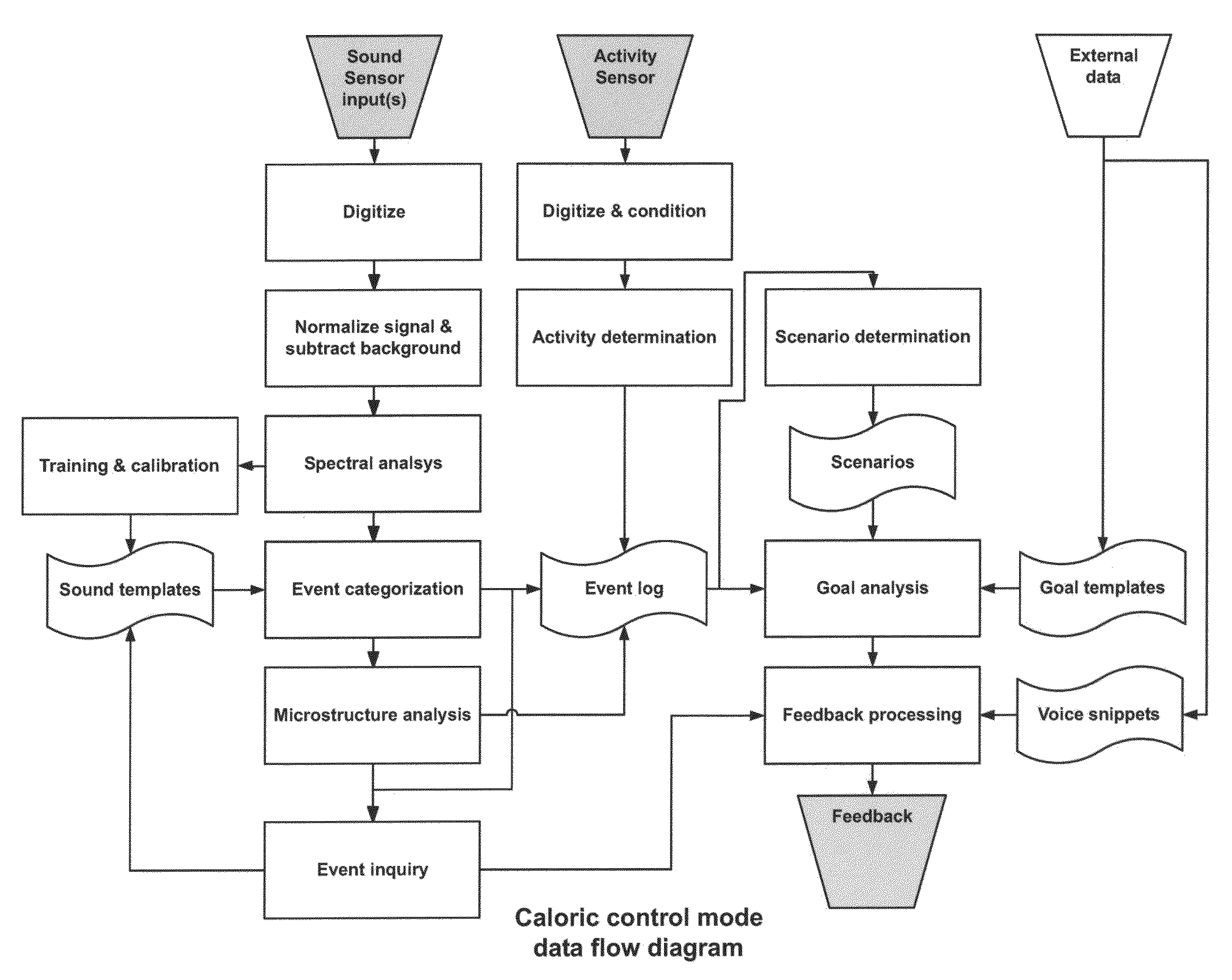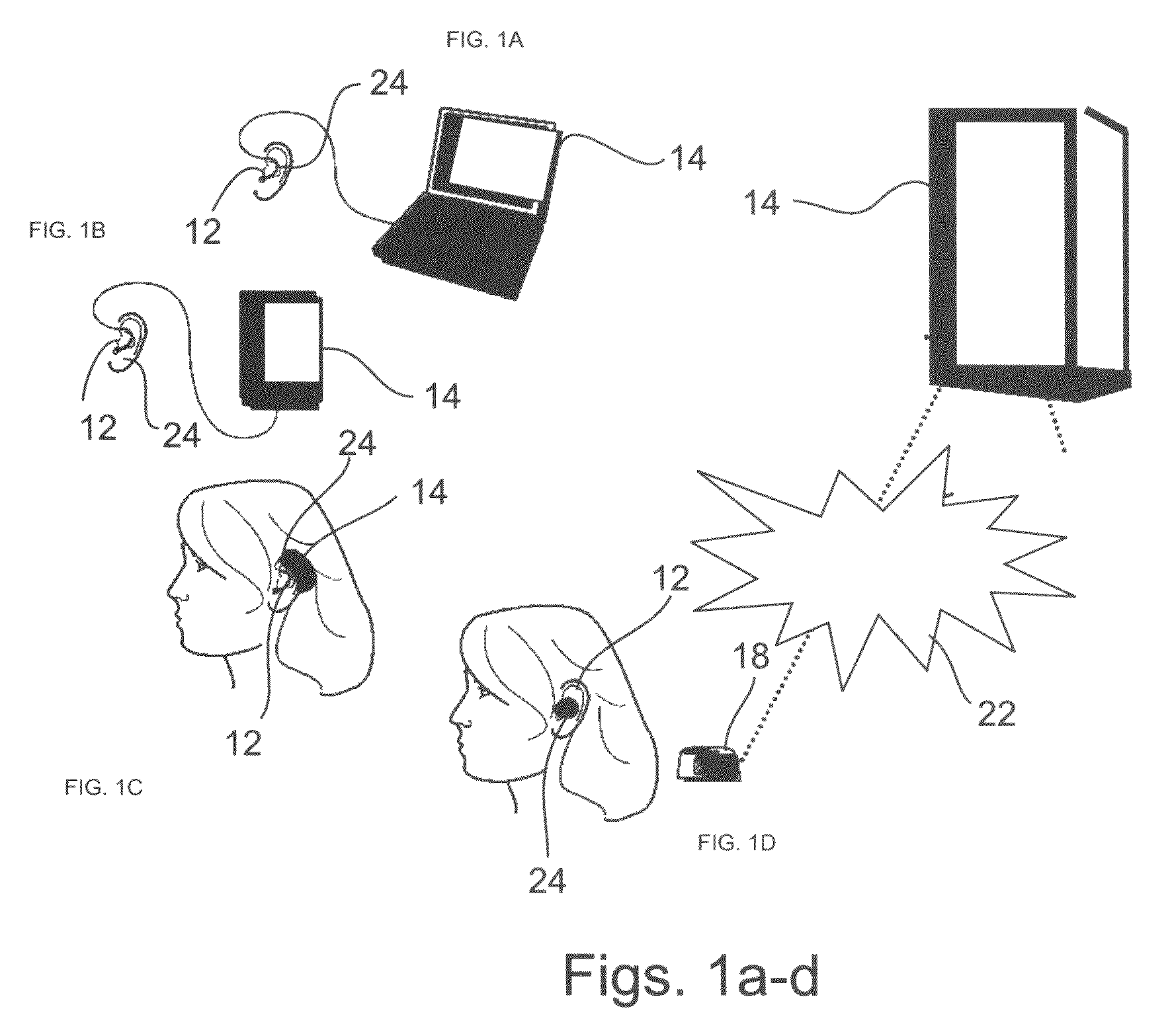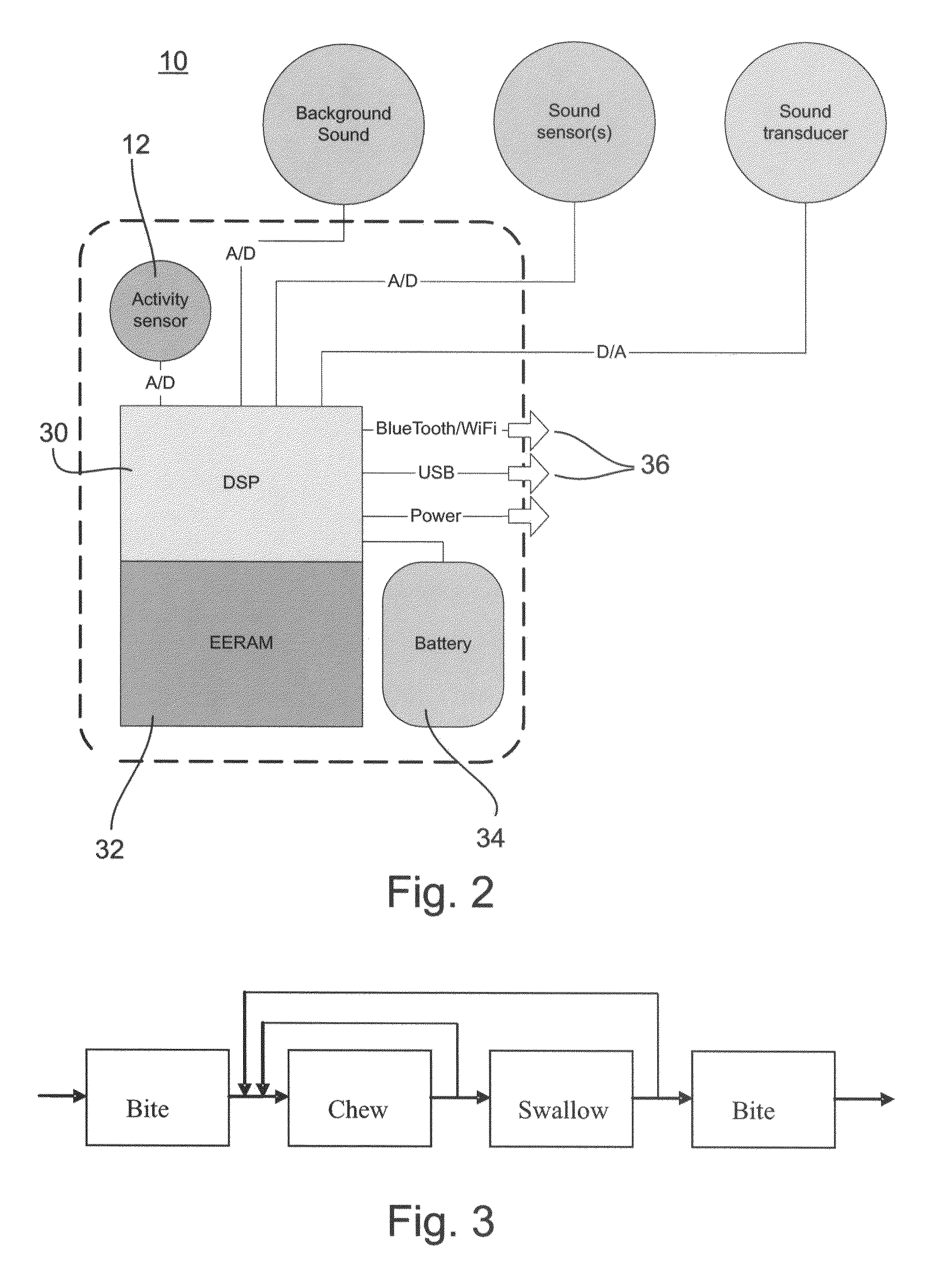Systems and methods for monitoring and modifying behavior
a behavior modification and behavior technology, applied in the field of systems and methods for monitoring and modifying behavior, can solve the problems of long recovery time, no of the above-mentioned approaches have been shown to be effective, and the general ability of most people to implement behavior modification without external assistan
- Summary
- Abstract
- Description
- Claims
- Application Information
AI Technical Summary
Benefits of technology
Problems solved by technology
Method used
Image
Examples
example 1
Monitoring and Analyzing Eating Microstructure Data
[0367]In a series of experiments, eating microstructure data was collected from 12 subjects eating a variety of foods within a controlled environment. The length of the recordings for 10 subjects was 20 minutes and for 2 of the subjects 10 minutes.
[0368]The subjects were asked to eat four crunchy foods (almonds, corn chips, Chex cereal, and apple), three soft foods (bagel, turkey, and banana), and two drinks (plain water, and carbonated soda). Each subject was asked to read two unique text paragraphs as part of the protocol. A sample protocol is as follows:
STEP ACTION DESCRIPTION
[0369]1 START[0370]2 SAY Your age, your gender (male or female), your height, and your weight.[0371]3 SAY I will eat a small bagel.[0372]4 EAT A small bagel.[0373]5 SAY I will drink a third of a cup of water.[0374]6 DRINK A third of a cup of water.[0375]7 SAY I will eat 10 almonds.[0376]8 EAT 10 almonds.[0377]9 SAY I will drink a third of a cup of soda.[0378...
example 2
Monitoring Energy Expenditure and Breathing Patterns
[0426]In a series of experiments, a Sonion Microtronic (www.SonionMicrotronic.com) 9721GX electret microphone 3.6 mm×3.6 mm×2.8 mm modified by removing the filter that normally excludes low frequency acoustic energy was covered with a 5 mm diameter hollow elastic bubble cover to couple acoustic energy from the skin to the microphone and mounted in an elastic support piece that positioned the microphone on the lower surface of the external ear canal just interior to the intertragic notch. The microphone and the support piece all fit within the confines of the outer rim of the conchal cavity of the human subject. A thin electrical wire transmitted the acoustic energy collected by the microphone to an analog to digital converter in a personal computer at a sampling rate of 16 KHz with 16 bits of precision and the resulting acoustic energy was captured and displayed using Adobe Audition 1.5. FIG. 11 shows the resulting trace of acousti...
example 3
Detection of Chewing Activity Using Accelerometer and Microphone Sensors
[0428]A Knowles BU-3173 miniature accelerometer and the Sonion Microtronic 9721GX electret microphone used in Example 2 were placed in contact with the skin of the skull a few millimeters above the highest point of the connection of the helix of the ear to the skull (this is close to the area where the horizontal temple piece of eye glasses rest on the ear). A plastic bracket that wrapped around the back of the ear similar to a behind-the-ear hearing aid held each sensor in contact with the skin. The muscle group immediately under the skin in this area is called the temporoparietal muscle. The accelerometer was mounted on the left side of the head and the microphone on the right side. The electrical signals generated by the sensors were fed through thin wires into a digital oscilloscope as the subject chewed gum eight times. The subject was silent and did not move before and after the eight chews. FIG. 13 shows ...
PUM
 Login to View More
Login to View More Abstract
Description
Claims
Application Information
 Login to View More
Login to View More - R&D
- Intellectual Property
- Life Sciences
- Materials
- Tech Scout
- Unparalleled Data Quality
- Higher Quality Content
- 60% Fewer Hallucinations
Browse by: Latest US Patents, China's latest patents, Technical Efficacy Thesaurus, Application Domain, Technology Topic, Popular Technical Reports.
© 2025 PatSnap. All rights reserved.Legal|Privacy policy|Modern Slavery Act Transparency Statement|Sitemap|About US| Contact US: help@patsnap.com



